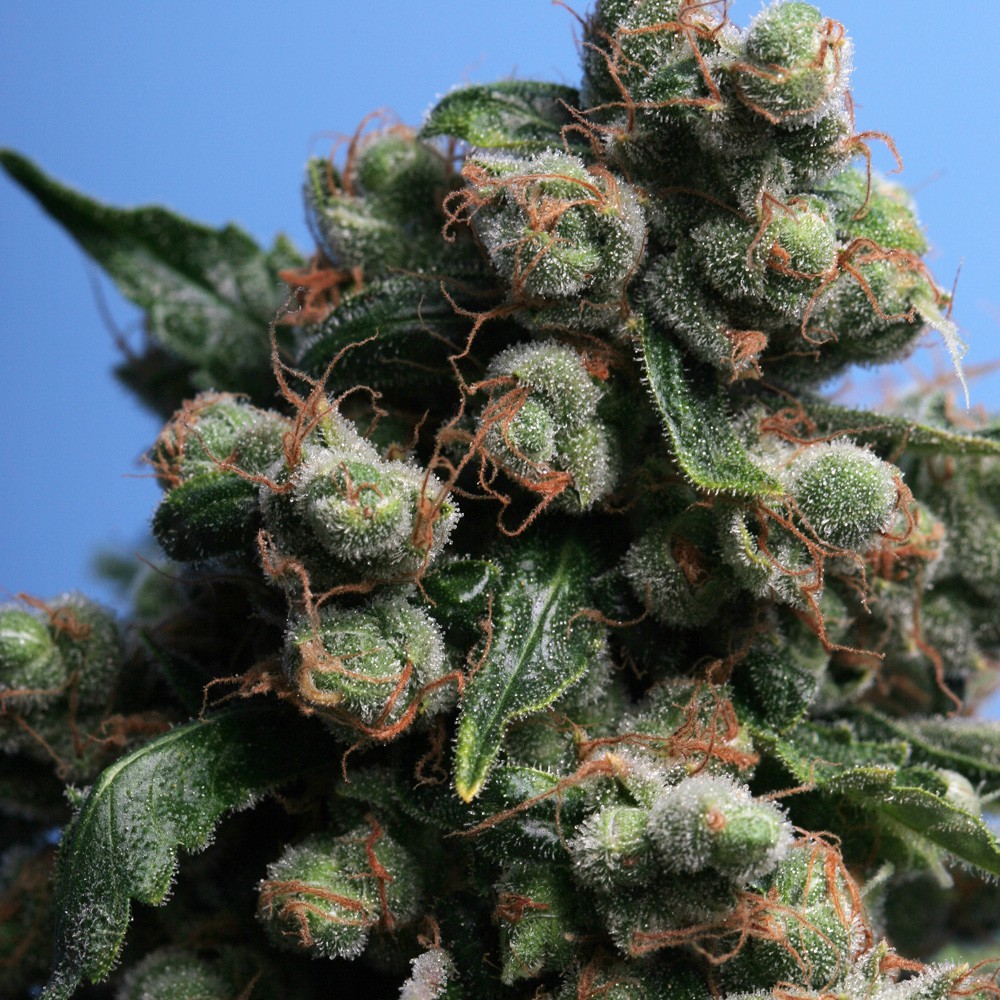Introduction
The T. Sage marijuana strain is a fascinating and multifaceted cannabis variety, known for its unique blend of effects, flavors, and growth characteristics. This guide provides an in-depth look at T. Sage, including its origins, appearance, aroma, flavor, effects, medicinal benefits, cultivation tips, and terpene profile. Additionally, we address frequently asked questions to offer a comprehensive understanding of this strain.
History and Genetics
Origins
T. Sage is a hybrid cannabis strain with a lineage that combines some of the most influential genetics in the cannabis world. Its creation involves crossing notable parent strains to produce a hybrid with a distinct profile, appealing to both recreational and medicinal users.
Parent Strains
The genetic background of T. Sage typically includes the following parent strains
Sage (also known as S.A.G.E.)
Sage is a well-regarded sativa-dominant hybrid known for its earthy and spicy flavor profile. It offers a cerebral, uplifting high that enhances focus and creativity. Sage contributes to the T. Sage strain with its distinctive spicy aroma and energizing effects.
Tangerine Dream
Tangerine Dream is a sativa-dominant hybrid known for its sweet, citrusy flavor and balanced effects. It provides an uplifting and euphoric experience, combined with a calming body high. The tangerine flavor and balanced effects from Tangerine Dream add a layer of complexity to the T. Sage strain.
Breeding and Development
The development of T. Sage involved crossing Sage and Tangerine Dream to achieve a hybrid that captures the best qualities of both parent strains. Breeders aimed to create a strain with a harmonious blend of flavors, balanced effects, and a robust cannabinoid profile. The result is a strain that offers a unique and enjoyable experience for users.
Appearance, Aroma, and Flavor
Appearance
T. Sage plants are typically medium to tall in height, with a robust and bushy growth pattern. The buds are dense and covered in a layer of frosty trichomes, giving them a glistening appearance. The leaves are a vibrant green with hints of orange and purple, adding to the strain’s visual appeal. The overall appearance is characterized by vibrant colors and a crystalline coating.
Aroma
The aroma of T. Sage is a delightful blend of spicy and citrusy notes. It exudes a rich, earthy fragrance with undertones of sweet tangerine and subtle hints of pepper. When the buds are broken apart, the aroma becomes more pronounced, revealing a complex and inviting bouquet that combines spiciness with citrusy sweetness.
Flavor
T. Sage offers a unique and flavorful taste experience. Upon inhaling, users can expect a burst of citrusy tangerine flavor with underlying spicy and earthy notes. The exhale reveals a blend of sweet and peppery flavors, creating a well-rounded and enjoyable taste profile. The combination of flavors makes for a memorable and satisfying smoking experience.
Effects and Benefits
Psychoactive Effects
T. Sage provides a balanced combination of mental and physical effects. The initial onset is typically uplifting and euphoric, characterized by enhanced mood, creativity, and focus. This is followed by a relaxing body high that helps alleviate tension and promote overall well-being. The strain’s balanced effects make it suitable for various activities, including socializing, creative pursuits, and unwinding after a long day.
Medicinal Benefits
T. Sage offers several potential medicinal benefits due to its balanced cannabinoid and terpene profile. Some of the common medical uses include
- Stress Relief: The strain’s relaxing effects can help reduce stress and promote a sense of calm and relaxation.
- Anxiety Management: The uplifting and mood-enhancing effects can alleviate symptoms of anxiety and improve overall mental well-being.
- Pain Relief: The strain’s relaxing body high can help manage chronic pain, muscle tension, and inflammation.
- Appetite Stimulation: The sweet and flavorful profile can stimulate appetite and help those with loss of appetite or eating disorders.
- Sleep Aid: The calming effects can aid in falling asleep and improving sleep quality, making it beneficial for individuals with insomnia.
Cultivation Tips
Growing Environment
T. Sage can be grown both indoors and outdoors, but it thrives in a controlled environment where temperature and humidity levels can be managed. Indoor growers should provide a stable environment with consistent light, temperature, and humidity to optimize growth and yield.
Light and Nutrients
Indoor growers should provide T. Sage with 18-20 hours of light per day during the vegetative stage. High-quality LED or HID grow lights are recommended to ensure the plants receive adequate light intensity. During the flowering stage, it is important to reduce the light cycle to 12 hours of light and 12 hours of darkness to induce bud formation.
Proper nutrient management is essential for healthy plant growth. Use a balanced nutrient formula during the vegetative stage, and switch to a phosphorus and potassium-rich formula during the flowering stage to support bud development. Be mindful of over-fertilization, as it can lead to nutrient burn and other growth issues.
Training and Pruning
T. Sage benefits from training and pruning techniques to improve light penetration and airflow. Techniques such as low-stress training (LST) and topping can help shape the plant and encourage even growth. Regular pruning of lower branches and leaves can also enhance bud development and increase overall yield.
Flowering Time and Harvest
T. Sage has a moderate flowering time, typically ranging from 8 to 10 weeks. The buds are ready for harvest when the trichomes turn milky white and the pistils begin to darken and curl inwards. Harvesting at the optimal time ensures the best flavor, potency, and overall quality of the buds.
Yield
T. Sage plants can produce a moderate to high yield, depending on growing conditions and care. Indoor growers can expect yields of around 1.5 to 2 ounces per square foot, while outdoor plants may produce slightly more. Proper cultivation techniques and attention to detail can enhance yield and overall quality.
Terpene Profile
Primary Terpenes
- Myrcene: Myrcene is known for its earthy and musky aroma, with relaxing effects that enhance the strain’s calming properties. It is also thought to have anti-inflammatory and analgesic benefits.
- Limonene: This terpene is responsible for the strain’s citrusy and sweet notes. It has mood-enhancing and stress-relieving properties, contributing to the strain’s uplifting effects.
- Caryophyllene: Caryophyllene has a spicy, peppery scent and is known for its anti-inflammatory and analgesic properties. It interacts with the body’s endocannabinoid system, potentially offering additional therapeutic benefits.
Secondary Terpenes
- Linalool: This floral-scented terpene is found in lavender and is known for its calming and sedative effects. It contributes to the strain’s relaxing body high and can help with anxiety and insomnia.
- Pinene: Pinene has a pine-like aroma and is known for its anti-inflammatory and bronchodilator effects. It can help improve focus and counteract some of the potential side effects of THC, such as short-term memory impairment.
Consumer Experience
Recreational Use
T. Sage is favored by recreational users for its balanced and enjoyable effects. The strain’s euphoric and creative onset makes it ideal for socializing, creative activities, and engaging in hobbies. Its relaxing body high also makes it suitable for unwinding in the evening or before bedtime.
Medicinal Use
Medical cannabis patients often choose T. Sage for its therapeutic benefits. The strain’s ability to relieve stress, anxiety, pain, and insomnia makes it a versatile option for various conditions. Its balanced effects can improve overall well-being and enhance quality of life for those dealing with chronic issues.
Side Effects
As with all cannabis strains, T. Sage may cause some side effects, particularly when consumed in large amounts. Common side effects include dry mouth, dry eyes, and mild dizziness. Some users may also experience paranoia or anxiety, especially if they consume too much or are sensitive to THC. It is important to start with a low dose and gradually increase to find the optimal amount for individual tolerance and needs.
Legal Status and Availability
Legal Status
The legal status of T. Sage varies depending on the jurisdiction. In regions where cannabis is legal for recreational or medicinal use, the strain is often available in dispensaries and cannabis shops. It is essential to be aware of and comply with local laws and regulations regarding cannabis cultivation, possession, and use.
Availability
T. Sage is a popular strain, and its seeds and clones can be found from various breeders and seed banks. Dispensaries in regions where cannabis is legal may carry this strain in flower, concentrate, and edible forms. When purchasing cannabis products, it is important to choose reputable sources to ensure quality and potency.
FAQs
What are the primary effects of T. Sage?
T. Sage provides a balanced combination of uplifting and relaxing effects. Users often experience enhanced mood, creativity, and focus, followed by a calming body high that helps alleviate tension and promote overall well-being.
Is T. Sage suitable for beginners?
Yes, T. Sage is suitable for beginners due to its balanced effects and moderate THC levels. It offers a pleasant and enjoyable experience without being overly intense, making it a good choice for those new to cannabis.
How long does it take for T. Sage to flower?
T. Sage has a moderate flowering time, typically ranging from 8 to 10 weeks. The buds are ready for harvest when the trichomes turn milky white and the pistils begin to darken and curl inwards.
What are the common medicinal benefits of T. Sage?
T. Sage offers several medicinal benefits, including stress relief, anxiety management, pain relief, appetite stimulation, and sleep aid. Its balanced cannabinoid and terpene profile contribute to its therapeutic effects.
Can T. Sage be grown outdoors?
Yes, T. Sage can be grown both indoors and outdoors. It thrives in a controlled environment but can also adapt to outdoor conditions with proper care. Ensure to manage temperature and humidity levels for optimal growth.
What are the common side effects of T. Sage?
Common side effects of T. Sage include dry mouth, dry eyes, and mild dizziness. Some users may also experience paranoia or anxiety, especially if they consume too much or are sensitive to THC.
Where can I buy T. Sage seeds?
T. Sage seeds are available from various breeders and seed banks. In regions where cannabis is legal, dispensaries and cannabis shops may also carry this strain in flower, concentrate, and edible forms. Always choose reputable sources to ensure quality and potency.
Conclusion
T. Sage is a well-rounded cannabis strain with a unique combination of effects, flavors, and medicinal benefits. Its balanced attributes make it a versatile choice for both recreational and medicinal users. Whether you are new to cannabis or a seasoned enthusiast, T. Sage offers a satisfying and enjoyable experience. As always, ensure to comply with local laws and regulations when using or cultivating cannabis and enjoy this exceptional strain responsibly.
- Traptox Aka Trapezius Botox Treatment Near Walton On Thames, Surrey - January 3, 2025
- Traptox Aka Trapezius Botox Treatment Near Mitcham, Surrey - January 2, 2025
- Knife Play Fetish: Sensual Fear And Sharp Sensations - January 2, 2025


